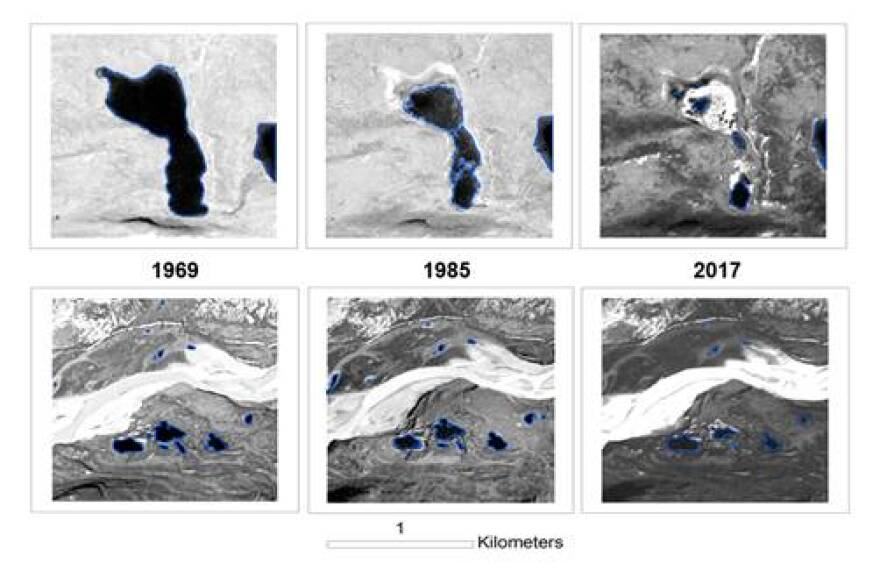A new study from Dartmouth College shows how warming in the Arctic is rapidly changing an important landscape.
The research, by Ph.D candidate Rebecca Finger Higgens, says lakes in the Arctic tundra are shrinking as global temperatures rise.
Finger Higgens spent a summer in Greenland studying these lakes, which are scattered across a vast glacial landscape of rolling hills and low shrubs.
"It's a place where one degree of temperature change can make a really big difference."
Arctic temperatures have risen around 2.5 degrees celcius since 1985.

Finger Higgens’ research used satellite imagery, including declassified Cold War records, to determine the tundra lakes have shrunk by 20 to 30 % in recent decades, likely due to changes in climate.
Those may include more water evaporating in warmer air, and thawing permafrost that can no longer keep water on the surface.
These lakes are an important habitat for insects, and for the migratory birds that come to the tundra to eat those insects and breed away from predators.
And, Finger Higgens says, "not having the Arctic to kind of refrigerate the globe is also game changing.”
She says the shrinking lakes are a symptom of Arctic warming, which is a major driver of global climate change and shifting weather and storm patterns.








